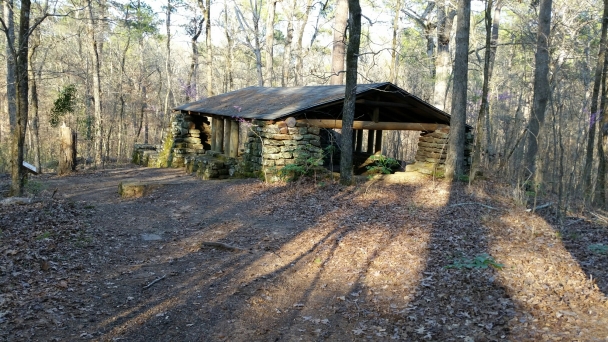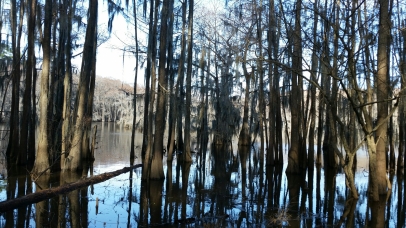(Note: I thought I’d avoid excessive parentheticals by placing extraneous commentary in footnotes, but that has only served to increase the amount of footnotes, and not decrease the parentheticals. But I suppose that’s my voice.)
Before it converted to a public service organization to identify and label bad drivers, 99.1 FM in St. Louis was the classical* music station. And on the breaks, the DJ repeated this wonderful catchphrase: “all music was once new music.” The point being that the pieces they broadcast were, at one time, contemporary to the culture and had never been heard before. And it’s no false equivalency to say that those composers were the pop stars of their time. If you don’t believe me, take a quick look at the life of Franz Liszt.
That mantra stuck with me, because when I first heard it, it immediately shifted my perspective. Before, I had a chronocentric relationship to any piece of media created prior to my cultural awareness. I may not have been able to articulate it, but all my life, if I encountered a piece of art, music, film, etc., I always viewed it as if it had always existed – as a time capsule and representation of the era. To my mind, classical music has always been hundreds of years old, Shakespeare’s works have always been a complete compendium known to all, and a portrait of the dead, historical, Charles I has always been a part of the eternal collection at the Saint Louis Art Museum. When you enter the world, everything is as it is, and has always been that way.
But the history of art is two-in-onefold: a search for human connection, and a response to all art before it (in that same search for human connection)**. When and how and why any media was created is equally as important*** as the perspective the individual experience an audience brings to the piece. So the point of the mantra, “all music was once new music,” is an implied petition that the audience ought to marry the original cultural context with the contemporary perspective – looking back to fully experience, evaluate, and value said music (or any other given media). “But Bradley,” you† say, “do you really expect me to research the social, political, and economic factors surrounding the creation of any piece of art I view?” By no means! While it certainly adds value to the experience, it is not necessary to the consumption of said media.
Now let’s put a pin in all that and talk about FEAR. Fear is a powerful motivator. Fear can drive us to action or inaction, but when it comes to choosing what media to consume, whether it is the risk of time spent, or time and money spent, the direction fear drives us is typically toward inaction. I fear that this twenty-two minute documentary of YouTube may not be worth my time, so I will instead choose to watch several shorter informative or comedic videos from unknown sources, because I perceive them individually as lower risks. Fear makes us less likely to give a chance to something unproven. To bring this around to my primary artistic discipline, it has been said that going to the theater is a leap of faith. And nowhere is the leap further, or the need for faith greater than with new works.‡
Which brings me to the pivot: I am not arguing (though I do agree) that it is valuable to reconsider the classics with fresh and re-contextualized eyes. But rather to look at the inverse of the adage that catalyzed this conversation. All new art has the potential to become old art. If all art was once new art, how does new art become old art? Did the classics persist because they are good, or do we view them as good because they have persisted? And what about the pieces that have not persisted? Do they lose value because they take up less bandwidth in the public consciousness? You won’t hear Sopwith Camel on the oldies station, but does that diminish the fact that they got minor regional airplay in their time? And some college kid in the late 70’s was so impressed with their sound he called record stores all over the state and drove cities away to find a copy their album?
If it sounds like I’m making a postmodern argument that all media is inherently equal, well – yes and no. I don’t believe that the postmodernism is a viable philosophy to carry at one’s core. However, it is useful counter to other extreme views. It protects us from the trap of measuring everything down to the ultimate dismissal of the idea that something can have intrinsic value. And art, by the definition above, by nature has intrinsic value.
Everyone is participating in the search for human connection through the creation of media, and the consumption of said media. And the value of that media, or art, is not defined by how successful it is in a capitalist structure, but rather by how it creates and uncovers human connection. This is why art is a fundamental human right. We are all participants whether we think we are or not, so make the most of every interaction. You may wander into an independent art gallery, or hear a songwriter in a coffeeshop, or see a play you’ve never heard of – and maybe you will find something you didn’t have before. You may connect with a perspective you didn’t think you could connect with, you may learn about a fear or desire you didn’t know you had. Do not allow yourself to be driven by fear to the familiar. Your neighbor needs an audience. You need an audience. New art is vital to the human experience, so make be a part of it.
*I am aware of the distinct genres such as baroque and romantic that are often erroneously lumped in with it classical, but for simplicity of semantics I’m using the fallacious term as an umbrella to cover a few centuries of piano, chamber, and orchestral music. I know it’s wrong, but it’s common in the vernacular, and we’re not going to linger here too long, so write your own blog post if you have a problem with it.
**Okay, so this thesis is moot, and I’m not taking the time to fully develop and defend it now, but maybe I will at a later date. Even if it’s not entirely correct, it’s not entirely wrong.
***Once again, moot and fairly postmodern, but go with it.
†the strawperson
‡I first heard this in a curtain speech before a play at Tesseract Theatre Company, but I know they stole it from someone else, so I’m not really sure where the credit is due.


